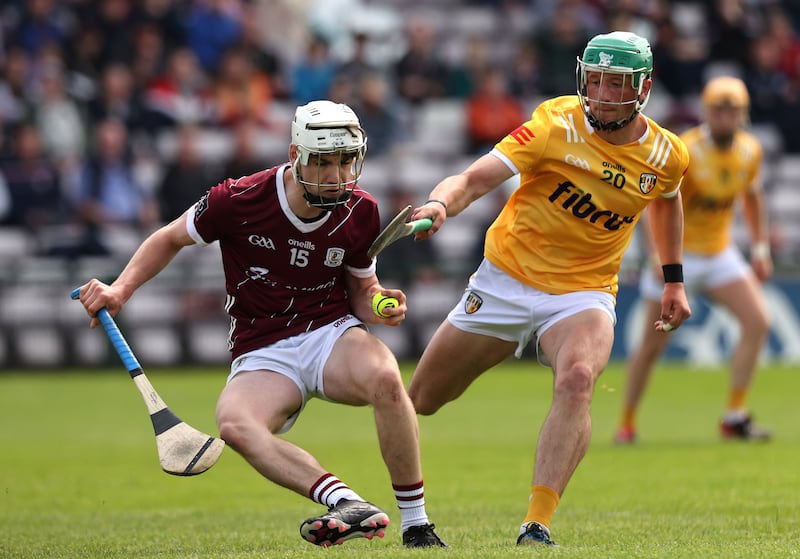The National Hurling League games played last weekend were the first intercounty hurling games played in either of our two main competitions since July 23rd last year.
After that interminable 195-day wait, maybe it was just as well for our respective heart rates that the GAA so carefully managed our expectations on the opening weekend.
Whether it was to protect us from overstimulation, or whether it was just a happy corollary, there surely weren’t too many people dying of excitement before, during or after last weekend’s action.
Six games; one draw, one narrow win . . . and four hammerings. Two wins of 10 or more points, and two more over 25 points. And none of those hammerings were particularly surprising.
READ MORE
There is an old line about the national leagues in the GAA being the only sporting events in the world that start with a roar and end with a whimper. Last weekend’s hurling appeared determined to meet that cliche head-on – if we can’t make them care about it late on, we’ll make damn sure they don’t care about it at the start either.
The football leagues at least made sure to start with a week one repeat of the two All-Ireland semi-finals from 2023, plus Galway against Mayo, in Division One. The hurling league made no such accommodation, and it was all fairly downbeat.
This is not news to the GAA, who moved last year to try to inject a bit of life into the hurling league by announcing a new structure for next year’s competition.
From next year it will be seven-team divisions, with the top three in each half of Division One in 2024 guaranteed to be in the top tier for the following year, plus the better of the two fourth-placed teams filling the seventh spot.
There are eight good teams in hurling at the moment, and Dublin are clinging on by their fingernails to relevancy in ninth spot. A year in a lower league next year is the only jeopardy that the hurling league can offer at the moment, and there’s little or no chance of a team spending any longer than a year there, as two teams will be promoted from Division 1B to the top seven every year.
Teams may well put a bit of focus on finishing in that top seven, but it’s hardly a disaster if they miss out. They’ll be back the following year in any case.
Tipperary put the boot down to beat Dublin in Parnell Park on Saturday and now all they have to do is beat Antrim and Westmeath and they’ll qualify for next year’s top division. By 4pm last Saturday afternoon, before any other team had even hit a ball, Tipperary had gone 90 per cent of the way to achieving their primary objective.

The problem of course is not the structure of the league. It is the rampantly successful provincial championship round-robins that are the issue.
One idea to revive interest in the league that I’ve heard flagged on numerous occasions over the last few years is to guarantee a place in the All-Ireland preliminary quarter-finals to the league winners, should they not qualify out of their provincial group.
All that would do, of course, is demean the one competition that is currently working perfectly (the provincial championships) to try and improve a zombie competition (the league).
Between the hurling and football leagues, this is a time of year when knowing what exactly is at stake can be a little difficult to pin down. There were four Fitzgibbon Cup quarter-finals played on Wednesday, and at least there you don’t have to second-guess yourself. What you’re watching is for real. There are no second chances.
The colleges are obviously operating under pressure from intercounty managers, many of whom keep getting asked the question (and many of whom never miss a chance to answer the question), why the third-level competitions have to be played concurrently with the league.
They have their own personal fiefdoms to protect, and they’re more than happy to do so. Henry Shefflin has been among those complaining wearily about the Fitzgibbon, but then again he played Declan McLoughlin against Westmeath last Sunday, even though Shefflin knew McLoughlin had a colleges quarter-final coming up this week.
Galway won by 31 points, and McLoughlin picked up an injury that ruled him out of Mary I’s quarter-final win over TUS Midwest. Intercounty managers never seem too worried about the amount of minutes players have to play in total, just the amount of minutes they play for someone other than themselves.
I can see why Brian Lohan would insist on playing all the Fitzgibbon players in his squad for a game against Cork, and man of the match Mark Rodgers spoke afterwards about how much he enjoys bouncing from intercounty to colleges, and back again. But there is no shortage of games in this toothless league system that colleges players cannot be rested for.
Shefflin would’ve surely learned at least as much about Declan McLoughlin in a Fitzgibbon Cup quarter-final than in a league game at home to Westmeath. As a watching public we learned little or nothing from last weekend, and the coming weeks don’t promise riches on that front either.

















